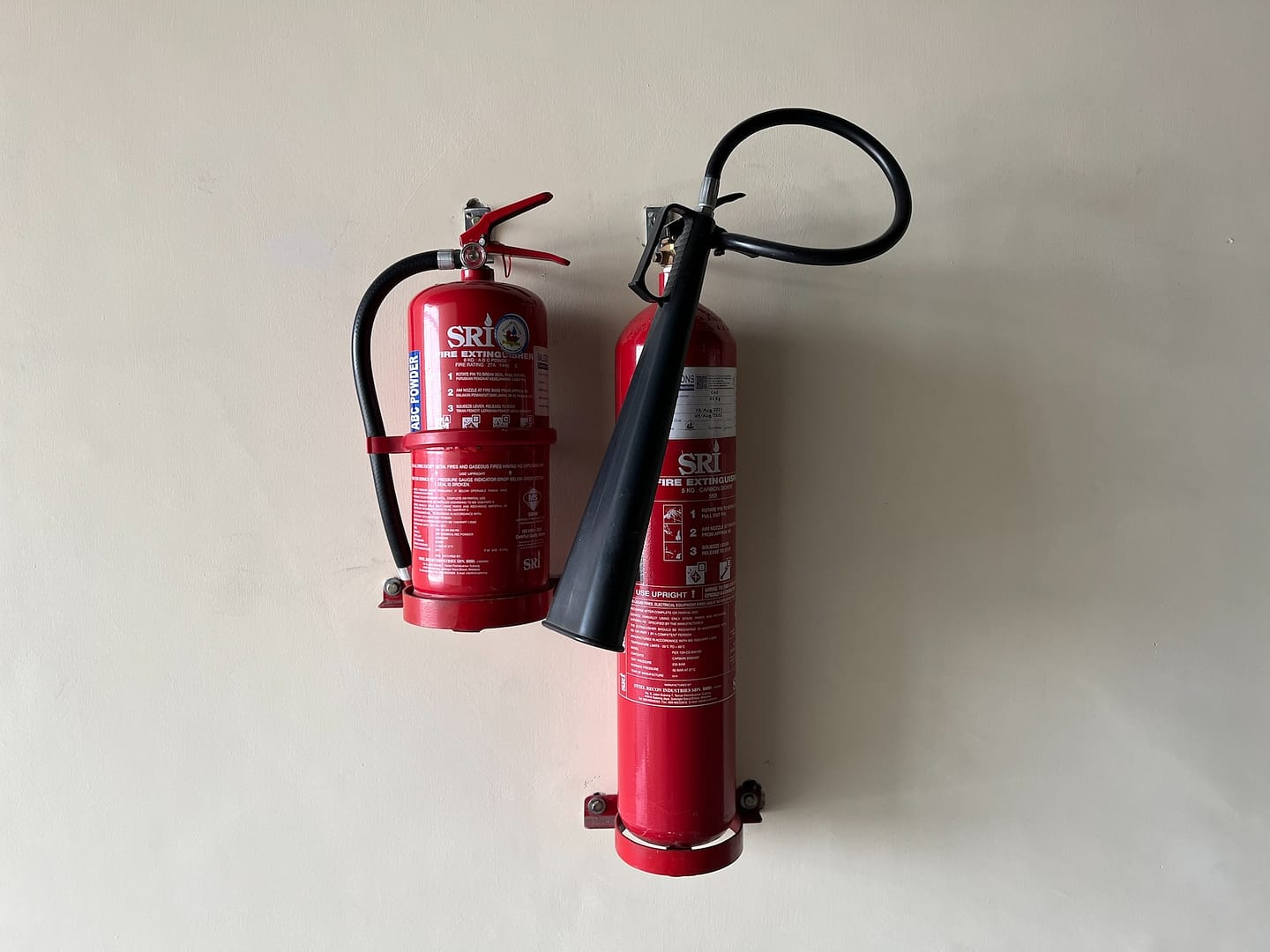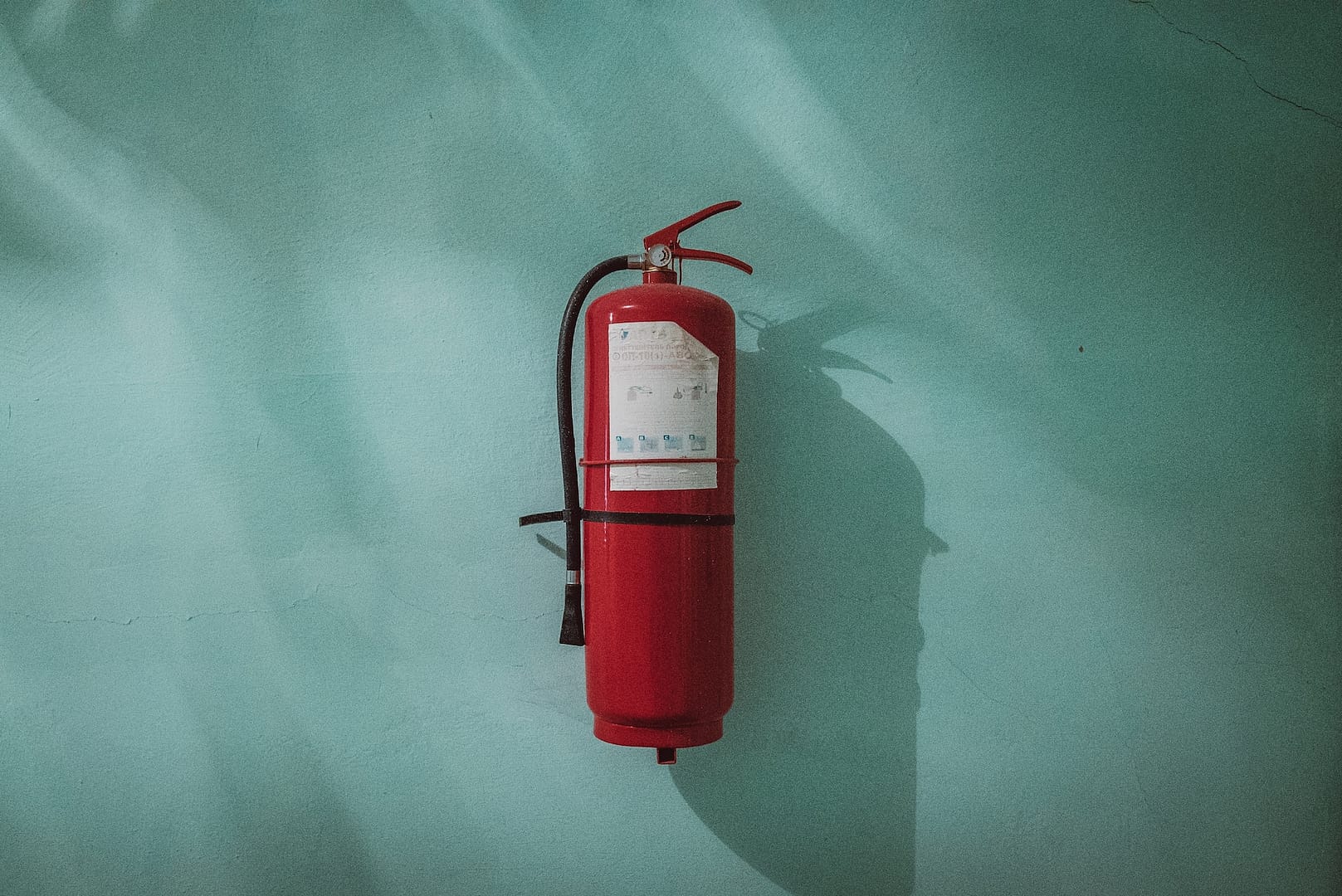In the fast-paced environment of today’s workplaces, the safety of employees should always be a top priority. One crucial aspect of workplace safety is understanding the various Fire Extinguisher Types and their Usage. Fires can break out unexpectedly, and having the right type of fire extinguisher readily available can make a life-saving difference. In this article, we will explore the different fire extinguisher types, their applications, and how to use them effectively in a workplace setting.
Understanding the Need for Fire Extinguishers in the Workplace
Before delving into the various types of fire extinguishers, it’s essential to grasp why these safety devices are vital in a workplace. Fires can happen for numerous reasons, from electrical faults to human error, and they pose a significant threat to people and property. To mitigate this risk, employers and employees must be prepared with the appropriate tools, including fire extinguishers.
In the UK, fire safety regulations and guidelines are set by the government to ensure that workplaces are equipped to handle fire emergencies adequately. This includes specifying the types of fire extinguishers that must be present and their correct usage. The objective is clear: safeguard lives, minimise property damage, and create a secure working environment.
Types of Fire Extinguishers
Fire extinguishers come in various types, each designed to combat specific classes of fires. Understanding the different types of fire extinguishers is crucial for selecting the right one for a given workplace situation.
Water Fire Extinguishers
Water fire extinguishers are marked with a red label. They are effective for Class A fires, which involve common combustible materials such as wood, paper, and fabric. Water extinguishers work by cooling the fire and removing its heat source. However, they are not suitable for use on electrical fires or fires fueled by flammable liquids.
CO2 (Carbon Dioxide) Fire Extinguishers
CO2 fire extinguishers are distinguished by a black label. They are primarily designed for Class B and Class C fires, involving flammable gases or electrical equipment. Carbon dioxide extinguishes fires by displacing oxygen and removing the fire’s ability to burn. They leave no residue, making them ideal for protecting sensitive electrical equipment.
Powder Fire Extinguishers
Powder extinguishers have a blue label and can be used on Class A, B, and C fires. These versatile extinguishers are effective against a wide range of fires, including those involving flammable solids, liquids, and gases. However, they can create a cloud of dust when discharged, which may obscure vision and cause breathing difficulties in confined spaces.
Foam Fire Extinguishers
Foam fire extinguishers are marked with a cream label and are suitable for Class A and Class B fires. They work by smothering the fire with a blanket of foam, preventing the release of flammable vapours. Foam extinguishers are commonly used in places where there is a risk of fuel spills.
Wet Chemical Fire Extinguishers
Wet chemical extinguishers have a yellow label and are specifically designed for Class F fires, which involve cooking oils and fats. They react with the hot oils, cooling them and preventing re-ignition. These extinguishers are commonly found in commercial kitchens.
Fire Blankets
While not a traditional fire extinguisher, fire blankets are essential safety equipment in many workplaces. They can be used on small Class F fires, such as those in cooking equipment, to smother the flames and prevent the spread of fire.
Specialist Fire Extinguishers
In addition to the above standard fire extinguisher types, specialist fire extinguishers may be needed for specific workplaces or industries. These specialised extinguishers are designed to address unique fire risks, and their selection should be based on a thorough fire risk assessment.
Selecting the Right Fire Extinguisher
Choosing the correct fire extinguisher for your workplace is paramount. Using the wrong type of extinguisher can exacerbate the fire and put lives in danger. When determining which fire extinguisher to use, consider the following factors:
Type of Fire Risk: Assess the types of materials or substances present in your workplace that could fuel a fire. Different fire risks require different extinguishers.
Location: Place fire extinguishers in easily accessible locations where they are most likely to be needed. Ensure they are not blocked or hidden from view.
Training: Ensure that employees are trained in the proper use of fire extinguishers. In the UK, it is a legal requirement that employees receive fire safety training.
Fire Risk Assessment: Conduct a thorough fire risk assessment to determine the specific fire hazards in your workplace. This will help you make informed decisions about the types and locations of fire extinguishers.
Using Fire Extinguishers in the Workplace
Even with the right type of fire extinguisher at your disposal, using it correctly is crucial. The acronym “PASS” is often used as a simple guide to remember how to operate a fire extinguisher effectively:
- Pull: Start by pulling the safety pin located on the extinguisher’s handle. This pin prevents accidental discharge.
- Aim: Point the nozzle or hose at the base of the fire where the fuel source is. Avoid aiming at the flames themselves.
- Squeeze: Squeeze the handle to release the extinguishing agent. Maintain a firm grip while doing this.
- Sweep: Move the extinguisher from side to side while keeping the nozzle aimed at the base of the fire. This sweeping motion helps cover the entire fire area and ensure thorough extinguishment.
It’s essential to approach the fire cautiously, keeping a safe distance and having a clear escape route. Never turn your back on a fire or place yourself in a position where you might get trapped. If the fire is not quickly under control, evacuate the area and call the emergency services.
Regulatory Compliance in the UK
In the United Kingdom, fire safety regulations are comprehensive and ensure that workplaces are adequately prepared to handle fire emergencies. It is essential for employers and employees to be aware of and comply with these regulations. Key aspects of fire safety regulations in the UK include:
The Regulatory Reform (Fire Safety) Order 2005: This order places a duty on the “responsible person” to ensure the safety of employees and visitors. It requires a suitable fire risk assessment, the installation of fire safety measures, and employee training.
The Fire Safety (Employees’ Capabilities) (Wales) Regulations 2007: These regulations require employers to provide training and information to employees regarding fire safety.
The Fire (Scotland) Act 2005 and The Fire Safety (Scotland) Regulations 2006: These pieces of legislation outline the requirements for fire safety in Scotland, which are similar to those in the rest of the UK.
Regular Maintenance and Inspections
Simply having fire extinguishers in the workplace is not enough; they must also be regularly maintained and inspected to ensure they are in working order. Regular inspections should include checking for the following:
Expiry Dates: Ensure that the extinguisher is within its valid period and replace it if it has expired.
Pressure Gauge: Make sure the pressure gauge indicates that the extinguisher is charged and ready for use.
Physical Condition: Inspect the extinguisher for any visible signs of damage or corrosion. Damaged extinguishers may not function correctly.
Tamper Seals: Ensure that the tamper seal is intact. A broken seal could indicate tampering or misuse.
Visibility and Accessibility: Confirm that the extinguisher is clearly visible, not blocked by obstacles, and easily accessible.
Instructions and Labels: Check that the operating instructions and labels are legible and not damaged.
Remember, proper maintenance and inspections are not only essential for safety but also a legal requirement in many countries, including the UK.
Making an Accident at Work Claim with National Claims
At National Claims, we understand that accidents can happen in the workplace, and sometimes, they can lead to injuries. When a workplace accident occurs, it’s essential to know your rights and how to seek compensation for any injuries sustained.
If you’ve been involved in an accident at work due to a fire or any other circumstances, National Claims is here to help you through the process of making a claim. Our dedicated team of legal experts specialises in workplace injury claims and will guide you through every step.
How to Start the Process
Contact Us: The first step is to get in touch with National Claims. You can call our helpline or fill out the online contact form on our website.
Free Consultation: We offer a free initial consultation to assess the details of your case. During this consultation, we will gather information about your accident and injuries.
Gathering Evidence: Your legal representative will help you gather all the necessary evidence, including medical reports and witness statements, to support your claim.
No Win, No Fee: At National Claims, we work on a ‘No Win, No Fee’ basis, which means you won’t have to pay any legal fees if your claim is not successful.
Your safety at work is paramount, and if you’ve been injured in a workplace accident, National Claims is here to support you in seeking the compensation you deserve.

Conclusion
Fire safety in the workplace is a responsibility that should not be taken lightly. Understanding the types of fire extinguishers available and how to use them effectively can mean the difference between a controlled fire and a catastrophic disaster. By following the guidelines and regulations set forth in the UK, and by conducting regular maintenance and inspections, workplaces can create a safer environment for employees and visitors alike. Fire extinguishers are not just tools; they are instruments of safety that can save lives and protect property. Therefore, always be prepared, stay vigilant, and know the right fire extinguisher for the job.
In case of accidents at work, National Claims is ready to provide assistance and support to those who need to make a claim for injuries sustained. Your safety is our priority, and we are here to help you through the process. Workplace accidents can happen, but with the right guidance and support, you can secure the compensation you deserve for your injuries.
Contact us to start your claim today with the help of one of our claims specialists.
Click below to see why we are one of the most trusted claims management companies in the UK.





